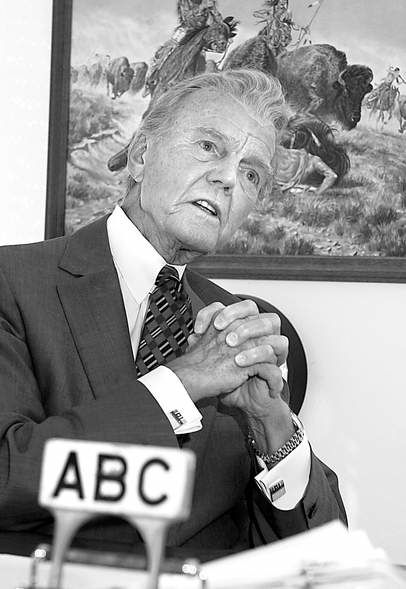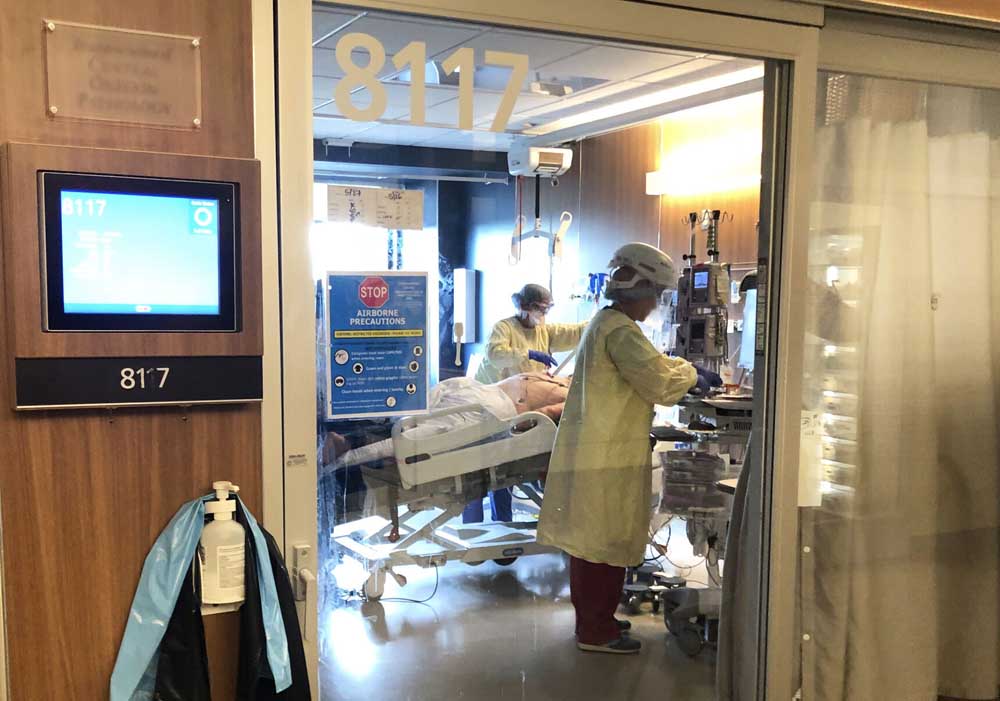Over 57 years, Paul Harvey spoke to millions a day
Published 4:00 am Sunday, March 1, 2009

- Paul Harvey always dressed formally for work. “It is all about discipline,” he said. “I could go to work in my pajamas, but long ago I got some advice from the man who was the engineer for my friend Billy Graham’s radio show. He said that one has to prepare in all ways for the show. If you don’t do that in every area, you’ll lose your edge.”
CHICAGO — Paul Harvey, a Chicago radio man whose melodious voice and hearty “Hello America” were cherished by millions for more than 57 years on national broadcasts that were an entrancing mix of news, storytelling and gently persuasive salesmanship, died Saturday. He was 90.
Called “the voice of Middle America,” and “the voice of the Silent Majority” by the media for his flag-waving conservatism and championing of traditional values, Harvey died surrounded by family at a Phoenix hospital, according to an ABC Radio Networks spokesman. The cause of death was not immediately available.
“Paul Harvey was the most listened-to man in the history of radio,” said Bruce DuMont, the president of the Museum of Broadcast Communications and host of the nationally syndicated radio program “Beyond the Beltway.” “There is no one who will ever come close to him.”
Paul Harvey Jr., who began writing his father’s show, “The Rest of the Story,” after he was hit by a car in 1976, offered condolences to those who loved to listen, even amid his own loss.
“My father and mother created from thin air what one day became radio and television news. So, in the past year, an industry has lost its godparents, and today millions have lost a friend,” he said in a statement.
The show reached an estimated 24 million listeners daily on more than 1,200 radio stations nationally and 400 Armed Forces Radio stations around the world, according to his Web site, www.paulharvey.com.
In Chicago, Harvey was heard on WGN 720-AM, but his local ties ran deeper.
Returning to civilian life after a three-month stint in the Army, Harvey moved to big-time radio in Chicago.
While broadcasting the news at WENR-AM in Chicago’s Merchandise Mart in 1951, Harvey became friends with the building’s owner, Joseph Kennedy, who helped him get on ABC nationally. With a recommendation from the Kennedy clan patriarch, ABC Radio Network began using him as a substitute newsman. Network affiliates began calling for more Harvey.
His 45-minute routine started at the ungodly hour of 3:30 a.m., when the alarm clock would ring in the Harveys’ 22-room home in west suburban River Forest, Ill. It never varied: brush teeth, shower, shave, get dressed, eat oatmeal, get into car and drive downtown. It all took a well-organized 45 minutes or so.
He dressed formally — in shirt, coat and tie — as if going to work as the president of a bank.
“It is all about discipline,” Harvey told the Tribune in 2002. “I could go to work in my pajamas, but long ago I got some advice from the man who was the engineer for my friend Billy Graham’s radio show. He said that one has to prepare in all ways for the show. If you don’t do that in every area, you’ll lose your edge.”
In touch in Chicago
Harvey rejected numerous offers to move his show to the East Coast so he could “stay in touch with his listeners and the American people,” DuMont said.
Coming of professional age in the late 1930s and ’40s, a time when broadcasters such as Lowell Thomas and Gabriel Heatter were household names, Harvey continued to flourish in the era of Howard Stern and Rush Limbaugh.
Listeners were greeted by Harvey’s trademark telegraphic delivery punctuated by his patented pauses:
“Hello, Americans!” he’d boom into the microphone in his studio high above Michigan Avenue, “This is Paul Harvey! (pause) Stand by for news!”
The “Paul Harvey News and Comment” broadcasts — five minutes in the morning and 15 minutes at midday six days a week — were consistently ranked first and second in the nation among network radio shows.
His five-minute “The Rest of the Story” broadcasts featured Harvey telling historical vignettes with surprise endings, such as the 13-year-old boy who receives a cash gift from Franklin Roosevelt and turns out to be Fidel Castro. Or the one about the famous trial lawyer who never finished law school (Clarence Darrow). He’d end each broadcast with his signature: “Paul Harvey. (long pause) Good day!”
Harvey’s various broadcasts reached an estimated 24 million listeners daily, by some accounts.
“He certainly was among the last great radio commentators,” Michael Keith, communications professor at Boston College and author of “The Broadcast Century,” told The Los Angeles Times in 2001.
Part of Harvey’s enduring appeal, Keith said, was his writing style, “a kind of down-home flavor yet sophisticated quality. It grabs you and holds on to you.
“His delivery was always reminiscent of the great broadcasters of the past, which made him a unique sound on contemporary radio. But he was always relevant to the present. Paul Harvey was never out of fashion. Once he came on the air, he was just irresistible. He really had you from the moment he said, ‘Page One!’”
He was born Paul Harvey Aurandt in Tulsa, Okla., on Sept. 4, 1918. His father was a Tulsa police officer who was killed in the line of duty when Harvey was 3, and Harvey’s mother raised him and his sister. (He dropped his last name for professional reasons in the 1940s. “Ethnic names were not very popular,” he once explained. Besides, “no one could spell it.”)
Growing up in the 1920s, Harvey developed an early infatuation with the new medium of radio, picking up stations from a homemade cigar-box crystal set.
‘This boy should be on the radio’
A champion orator in high school, he was encouraged by his English teacher-coach to go into broadcasting. She went so far as to escort her prized 14-year-old student down to Tulsa radio station KVOO where she told station managers, “This boy should be on the radio.”
Beginning as an unpaid gofer at a Tulsa radio station in 1933, Harvey worked his way up the radio ladder and soon began filling in at the microphone, reading spot announcements, the news and even playing his guitar on the air.
By the time he was taking speech and English classes at the University of Tulsa, he had worked his way up to a job as a staff announcer at KVOO. Jobs at other small radio stations in Abilene, Kan., and Oklahoma City followed.
While working as news and special events director at a radio station in St. Louis, Harvey met Lynne Cooper, a student teacher from a socially prominent St. Louis family who read school news announcements at the station.
Instantly smitten with the young woman he nicknamed “Angel” the day he met her, Harvey later asked her to dinner. On the night of their first date, he proposed as they sat in her parked car. They married in June 1940. The couple later kept the restored car — a white Nash LaFayette — parked in a specially built garage on their 260-acre ranch in Missouri.
“Since the first day of our marriage, we’ve worked side by side,” Harvey told the Tribune. “We are so used to it, and I think that if we had not worked so closely the marriage would not have survived. There has never been the opportunity for neglect.”
Lynne Harvey remained her husband’s closest professional collaborator until she died in May 2008.






